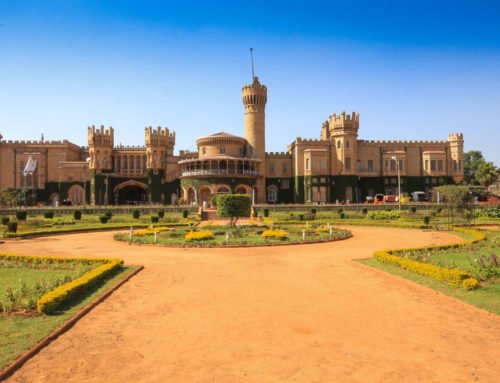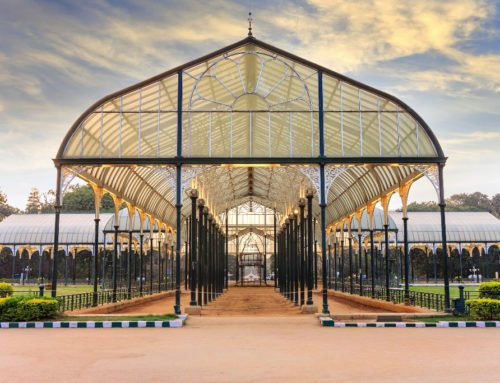Overview
- Features: Two-storeyed summer palace made of wood
- Opening Times: 8:30 am to 5:30 pm, daily
- Best Time to Visit: Late October to early March
- Duration: 20 to 30 minutes
- Travelled By: Bus
- Cost: Indian/foreigner Rs 5/100
- Address: Albert Victor Road, Chamrajpet, Bangalore, Karnataka, India
- Type: Palace
Author Reviews[display_rating_item_results rating_form_id=”2″ rating_entry_ids=”1″ show_category_filter=”false” show_options=”true” result_type=”star_rating” preserve_max_rating=”true” show_title=”false” show_count=”false” ]
Total Rating: [display_rating_result rating_form_id=”2″ show_count=”false” show_rich_snippets=true] [accordions load=”1″] [accordion title=”User Reviews” last] [display_rating_item_results rating_form_id=”5″ show_options=”true” result_type=”star_rating” preserve_max_rating=”true” show_title=”false” show_count=”true” show_rich_snippets=true] [/accordion] [accordion title=”Add Review”][display_rating_form show_email_input=”true” show_comment_textarea=”true” show_name_input=”true” rating_form_id=”5″] [/accordion] [/accordions]
Summary
Described as the “Envy of Heaven”, Tipu Sultan’s Summer Palace used to be the summer retreat of the Mysorean ruler Tipu Sultan. Made almost entirely of teak, the two-storeyed palace is finely embellished with balconies, pillars and arches. Although now dilapidated, it is still a hauntingly atmospheric place retaining the original elegant teak pillars.
Tipu Sultan’s Summer Palace Bangalore
Close to the vibrant Krishnarajendra (City) Market and Sri Venkataramana Temple in Bangalore stands Tipu Sultan’s Summer Palace, the summer residence of the Mysorean ruler Tipu Sultan. Its construction was started by Hyder Ali in 1781 within the walls of the Bangalore Fort and completed during the reign of his son, Tipu Sultan in 1791. After the death of Tipu Sultan in the Fourth Anglo-Mysore War, the palace was used by the British Administration as the Secretariat before moving to Attara Kacheri in 1868. Today it is a tourist spot located at the centre of Old Bangalore near Kalasipalyam Bus Stand.
[singlepic id=1516 w=720 h=560 float=center]
Made mostly out of wood, Tipu Sultan’s Summer Palace is a replica of the Dari Daulat Bagh in Srirangapatnam. Though it seems like a one-storey pillared pavilion, it is actually a double storeyed building. Built on a stone plinth, the façade has gigantic fluted pillars in wood with stone bases that support huge wooden beams constituting the structure. Cusped arches and brackets swing off the pillars in typical Indo-Islamic style, painted and polished in two different colours to accentuate the carvings on them. The walls and wooden ceilings of the entire palace are painted in floral motifs on madder red surfaces, in muted warm colours, gilded in great detail and beauty.
Tipu endearingly called his summer palace Rashk-e-Jannat, or the “Envy of Heaven”. Although now dilapidated, it is still a hauntingly atmospheric place retaining the original elegant teak pillars.
The upper chambers and balconies can be accessed by four staircases leading to them. The central portion on the first floor is a large hall leading off to four smaller rooms at its corners. These rooms are considered the Zenana (women’s) Quarters. Located on the two balconies in the north and south were the seats of State, where the Sultan held audience and conducted his affairs of State.
[singlepic id=1518 w=720 h=560 float=center]
The site also holds a painting of a grand throne visualized by Tipu Sultan himself. Coated with gold sheets and embellished with precious emerald stones, Tipu had vowed never to use it until he completely defeated the English Army. After the death of Tipu Sultan, the British Administration dismantled the throne and auctioned it in parts since it was too expensive for a single person to buy in its entirety.
The rooms on the ground floor have been converted into a small museum showcasing various achievements of Tipu Sultan and his administration. There are recent portraits of the people and places of Tipu’s time. There is a replica of Tipu’s tiger, which is presently located in the Victoria and Albert Museum in London. The clothes of Tipu Sultan and his crown are present on silver and gold pedestals. The silver vessels given by a general to Hyder Ali is also displayed.
In front of the palace is a beautifully landscaped garden and lawn.






